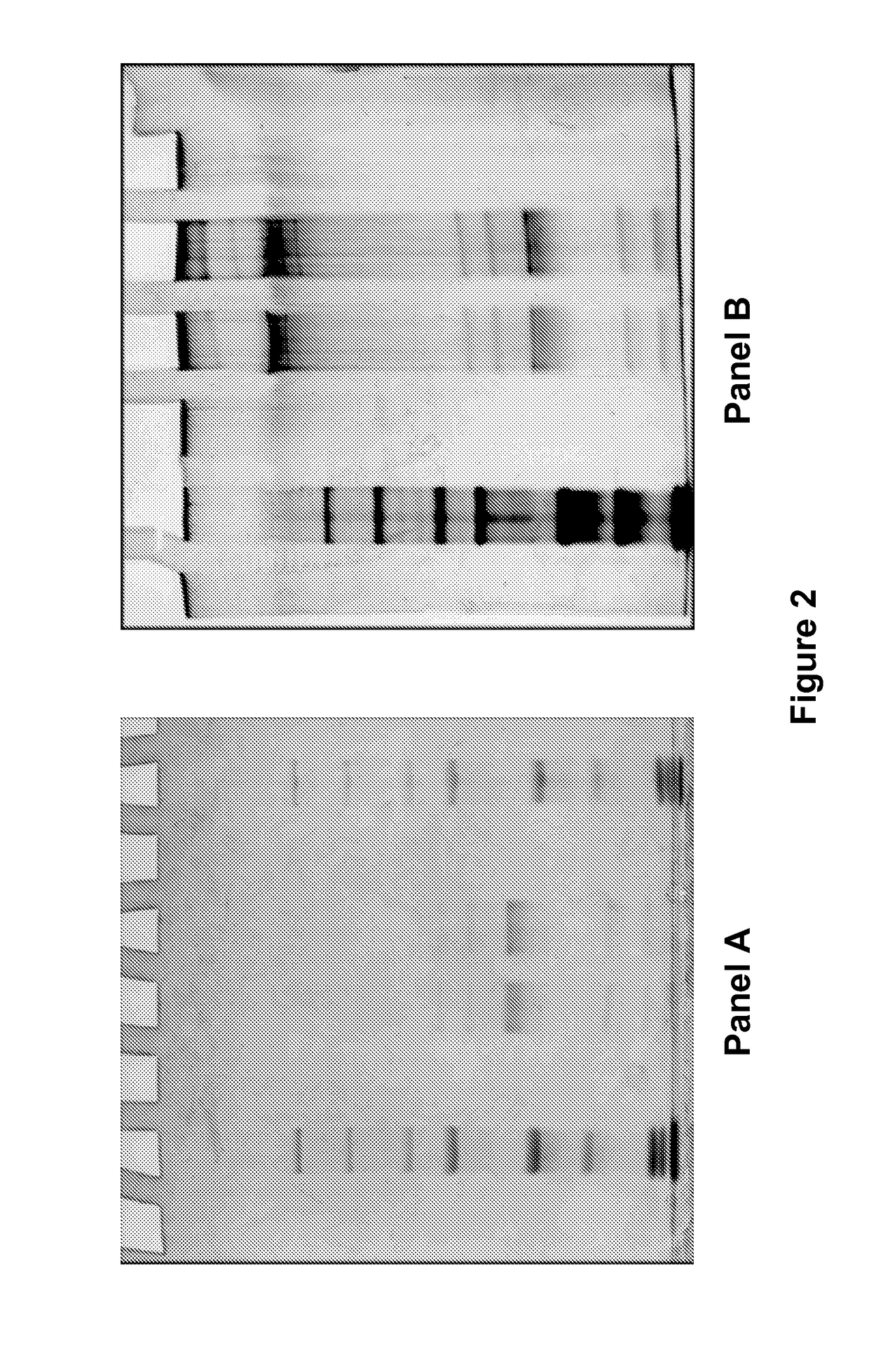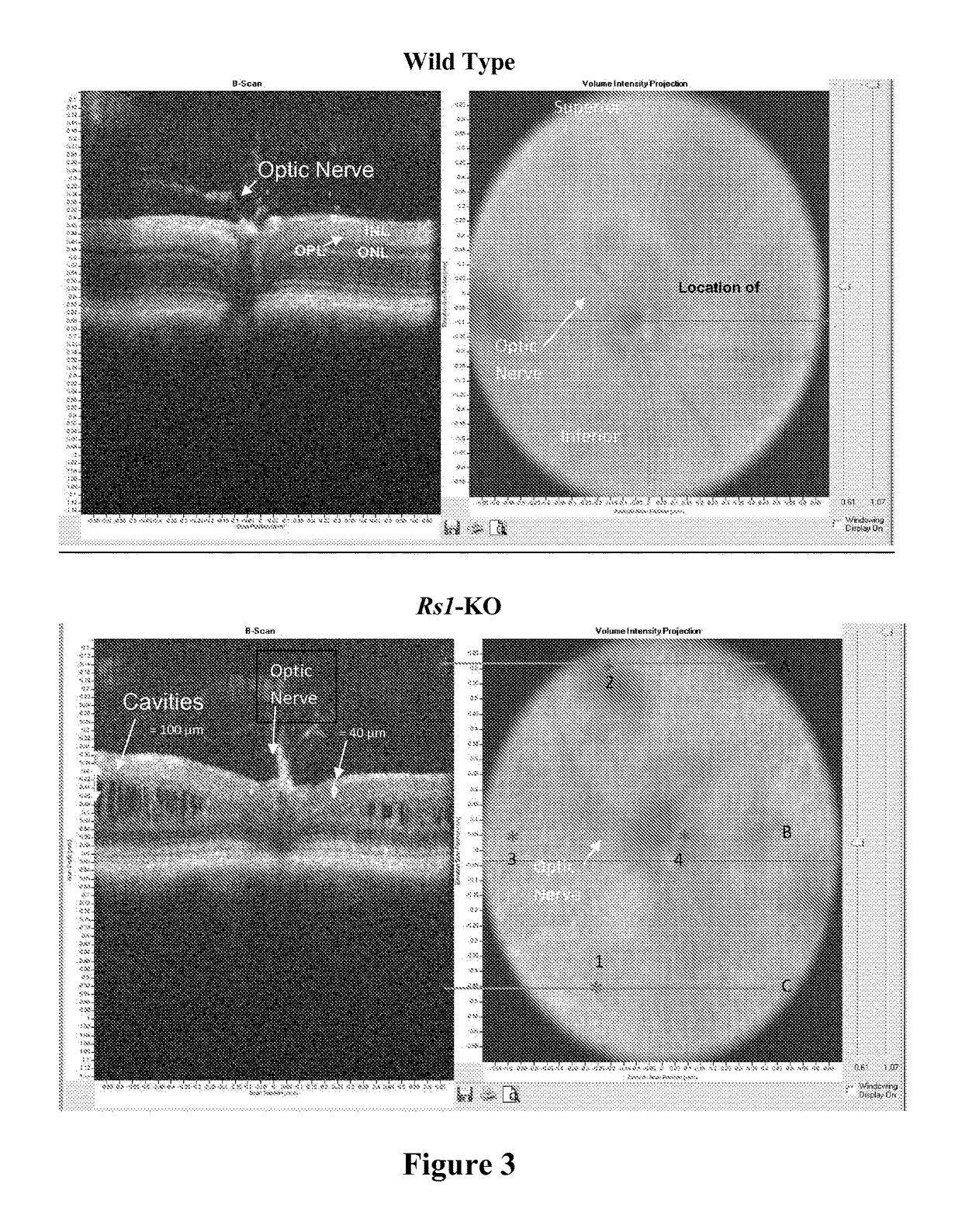Methods and compositions for treating genetically linked diseases of the eye
a technology of genetic linkage and composition, applied in the field of gene therapy, can solve the problems of untreated area being susceptible to retinal detachment, affecting the effect of treatment effect, and deteriorating condition with age, and achieve the effect of minimizing or avoiding unwanted inflammatory responses or other unwanted side effects
- Summary
- Abstract
- Description
- Claims
- Application Information
AI Technical Summary
Benefits of technology
Problems solved by technology
Method used
Image
Examples
example 1
[0100]A study was conducted to evaluate the ability of the proposed clinical adeno-associated virus (AAV) retinoschisin vector, AAV8 scRS / IRBP hRS, to preserve retinal function and structure, and to mediate retinoschisin protein expression when administered intravitreally to the retinoschisin deficient Rs1-KO mouse. AAV8 scRS / IRBP hRS vector at doses of 1.0e6, 1.0e7, 5.0e7, 1.0e8, 5.0e8 and 2.5e9 vg / eye, or vehicle, were administered by intravitreal injection to 18-34 day old Rs1-KO mice. The contralateral eye was not injected. Corneal electroretinogram (ERG) a-wave and b-wave amplitudes were measured at 11 to 15 weeks and 6 to 9 months post injection (PI), retinal cavity formation was measured by optical coherence tomography (OCT) at 12 to 16 weeks PI, and retinoschisin protein expression was measured by immunohistochemistry at 12 to 18 weeks and 6 to 9 months PI. ERG and OCT are used clinically as indicators of retinal function and structure, respectively. At 11-15 weeks PI, eyes ...
example 2
[0162]A study was conducted to assess the tolerability of expression vectors of the invention in rabbit eyes compared with control injections of vehicle alone. Briefly, thirty-nine New Zealand White rabbits (age 6-7 months at injection; weight 2.4-3.8 kg) were used in the present study. All in life procedures were conducted in compliance with the ARVO Statement for the Use of Animals in Ophthalmic and Vision Research and were approved by the Animal Care and use Committee of the National Eye Institute.
[0163]Vectors or vehicle were administered in the right eye by intravitreal injection using ½ cc Insulin Syringes with permanently attached 28 gauge needle (Ultrafine U-100 syringe—BD Biosciences, San Jose, Calif.) in an injection volume of 50 ul. Syringes were loaded under sterile conditions in a laminar flow hood on the day of injection. Rabbits were anesthetized with IM ketamine, 40 mg / kg, and xylazine, 3 mg / kg. Sterile surgical instruments were used and the animals were prepared ase...
PUM
| Property | Measurement | Unit |
|---|---|---|
| diameter | aaaaa | aaaaa |
| pH | aaaaa | aaaaa |
| pH | aaaaa | aaaaa |
Abstract
Description
Claims
Application Information
 Login to View More
Login to View More - R&D
- Intellectual Property
- Life Sciences
- Materials
- Tech Scout
- Unparalleled Data Quality
- Higher Quality Content
- 60% Fewer Hallucinations
Browse by: Latest US Patents, China's latest patents, Technical Efficacy Thesaurus, Application Domain, Technology Topic, Popular Technical Reports.
© 2025 PatSnap. All rights reserved.Legal|Privacy policy|Modern Slavery Act Transparency Statement|Sitemap|About US| Contact US: help@patsnap.com



